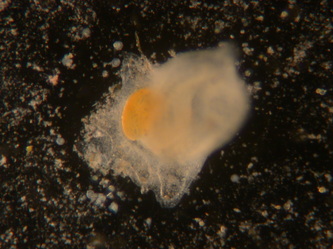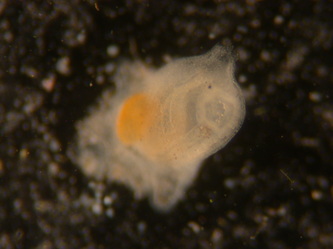About the project
The Centers for Ocean Sciences Education Excellence (COSEE) offers an excellent internship program called Promoting Research Investigations in the Marine Environment (PRIME) which gives community college students the chance to spend a summer doing research, outreach, or related work at a marine facility.
The creator of this site, Megan "Akiko" Onuma, is a PRIME intern who worked at the Oregon Institute of Marine Biology under the guidance of Professor Richard Emlet during the summer of 2011. The purpose of the project was to create an identification key for juvenile ascidians, bryzoans, and other fouling/settling organisms from the Inner Boat Basin in Charleston, Oregon. All photos, observations, and text on this website are the work of Akiko Onuma, unless otherwise stated.
Photographs and information on this website are available for scientific, educational and general public use, but please credit them to Akiko Onuma or to this website.
Thank you!
The creator of this site, Megan "Akiko" Onuma, is a PRIME intern who worked at the Oregon Institute of Marine Biology under the guidance of Professor Richard Emlet during the summer of 2011. The purpose of the project was to create an identification key for juvenile ascidians, bryzoans, and other fouling/settling organisms from the Inner Boat Basin in Charleston, Oregon. All photos, observations, and text on this website are the work of Akiko Onuma, unless otherwise stated.
Photographs and information on this website are available for scientific, educational and general public use, but please credit them to Akiko Onuma or to this website.
Thank you!
Methods
In order to capture the photos on this website, a number of petri dishes were set into the ocean water at the Inner Boat Basin in Charleston, OR. Each day, the dishes were removed from the ocean, checked for new settlers, and then replaced back into the ocean. New, distinct settlers that did not resemble any prior settlers were recorded and tracked. Such settlers were each assigned a specimen name and their location on the petri dish was recorded. This way the same individual organism could be followed over multiple days. Generally, settlers were checked and photographed on the 1st, 2nd, 3rd, 6th, 9th, and 12th days, after appearing on the dish. Each settler was photographed with a dark and light background, to aid in identification. For photography, an Olympus SZH10 dissecting microscope, an Olympus BH-2 compound microscope, and a Nikon Coolpix 995 camera were used.
All photographs were modified using Adobe Photoshop CS v8.0 to adjust brightness, color levels, and contrast in such a way as to clearly bring out the features of each organism. Some photographs (marked by an asterisk beside the specimen name) were modified by creating a composite from two images on different focal planes of the same organism. When using microscopes, it is difficult to get all of the organism into focus at the same time, as shown below. In order to compensate for that, two images were taken with different parts of the organism in focus and then combined together in order to create an image where most of the organism is in focus, as shown below.
All photographs were modified using Adobe Photoshop CS v8.0 to adjust brightness, color levels, and contrast in such a way as to clearly bring out the features of each organism. Some photographs (marked by an asterisk beside the specimen name) were modified by creating a composite from two images on different focal planes of the same organism. When using microscopes, it is difficult to get all of the organism into focus at the same time, as shown below. In order to compensate for that, two images were taken with different parts of the organism in focus and then combined together in order to create an image where most of the organism is in focus, as shown below.
New organisms were taxonomically identified using various resources including James Carlton's The Light and Smith Manual, Eugene Kozloff's Marine Invertebrates of the Pacific Northwest, various scientific articles, and the expertise of Professor Richard Emlet and graduate student Kira Treibergs. One species, Corella inflata, could only be identified by collecting and brooding fertilized embryos from adults to verify that the juveniles seen on the dishes under the microscope were of the same species.



